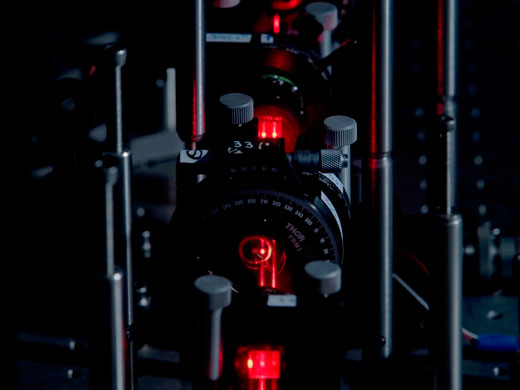This recent Nature article makes people jump up and down in classical, non-quantum jumps as we speak: “Experimental non-classicality of an indivisible quantum system”.
There are plenty of misleading news articles already, including here on Science2.0, about that this experiment is disproving classicality without even needing “spooky action at a distance” or entanglement. The message one often takes away is therefore that this new experiment may be the best proof yet, the most convenient disprove of hidden variables.
Alas, it is not so. In fact, it is puzzling why this made it into Nature at all, except of course, one of the authors is Anton Zeilinger, no disrespect intended.
First off, the lead author claims that:
"We were able to demonstrate experimentally that quantum mechanical measurements cannot be interpreted in a classical way even when no entanglement is involved," said Radek Lapkiewicz from the Vienna Center for Quantum Science and Technology at the University of Vienna.
This is plainly wrong – totally wrong for several different reasons! The first reason is that the experiment involves wave-plates rotated at certain angles, and these angles are not selected after the photon is already on its way, but long before. This implies that the photon "knows" the complete setup already and it can have a set of classical, hidden variables that tell it exactly where to go at every turn inside the experimental setup, ensuring any outcome you could possibly want (this is called the "communication loophole").
It is true that the experiment cannot be explained in terms of certain, non-contextual hidden variables, but that is neither big news nor is it a proof against classicality.

The central part of the optical setup. (Credit: IQOQI; Jacqueline Godany 2011)
From the article:
“Our experimental results are in conflict with any description of Nature that relies on a joint probability distribution of outcomes of simple set of measurements. This also precludes any description in terms of non-contextual hidden-variable models.”
This is very different from “cannot be interpreted in a classical way”.
Moreover, how is it that there is no entanglement? I disagree! To be sure, some decided to talk about "superposition" of states of a single particle and about "entanglement" only if there are more than just one particle. Nevertheless, apart from that the number of particles is anyway no more than a state of the particle’s field, even in case of just one particle, say in a Schrödinger cat state, the states in superposition are also said to be entangled, which is usual for example when discussing decoherence.
In other words, the main claim hangs on a subtle, arbitrary, and even misleading interpretation of the word “entanglement”. In fact, entanglement is the very core of quantum physics, and without it, it is classical, period! Uncertainty and quantization can be modeled classically; only entanglement is what makes quantum physics the beast that it is.
So what is the claim actually? Well, it is that one needs a certain number of modes, namely three plus six different setup configurations, in order to show that no non-contextual hidden variables possibly explain quantum physical outcomes.
I even disagree with that. Already the double slit experiment with single photons is sufficient. It also involves no “entanglement”, in the sense of the authors, because there are only single photons at any one time.
Secondly, if you wanted to describe the experimental outcome with the help of hidden variables, they would need to be contextual, the context being whether the other slit, namely the one the classically modeled photon does not go through, is open or closed – that is the context.
In case you do not see the relation: The double slit experiment has different outcomes due to whether there is interference between the two different “modes”, namely going through the upper versus passing the lower slit. The two modes interfere where they spatially overlap at the same spots on the screen (you could just put many detectors there instead, just like in the new experiment!). In the experiment described by the Nature article, the same thing is responsible for the statistical correlations, namely interference between the different modes as they get overlaid into the same detectors by an arrangement of calcite crystals.
Sure – in order to violate the particular inequality the authors used, you need three modes, not two, but maybe it should have been explained why that particular inequality is desired in the first place. I do not see any point except if this is a preliminary experiment to a really good one where the rotations are selected after the photon is emitted, say to fix the last loopholes that other Bell-type experiments still suffer from.
In summary, this is a nice experiment and there are some fine details of interest to the expert, but there is nothing really novel of importance that we learn from it, and most importantly: This experiment does not provide a simpler substitute for the Einstein-Podolsky-Rosen/Bell/Aspect proof which actually disproves all classical hidden variable models. It is not even a substitute, let alone simpler.
This experiment one can simulate easily with a classical computer, simply by programming contextual hidden variables. The Quantum Crackpot Randi Challenge however cannot be overcome.
-------------------
Citation: Radek Lapkiewicz, Peizhe Li, Christoph Schaeff, Nathan K. Langford, Sven Ramelow, Marcin Wieśniak&Anton Zeilinger, 'Experimental non-classicality of an indivisible quantum system', Nature 474, 490–493 (23 June 2011) doi:10.1038/nature10119
Sascha Vongehr's Science2.0 Articles by Topics



Comments